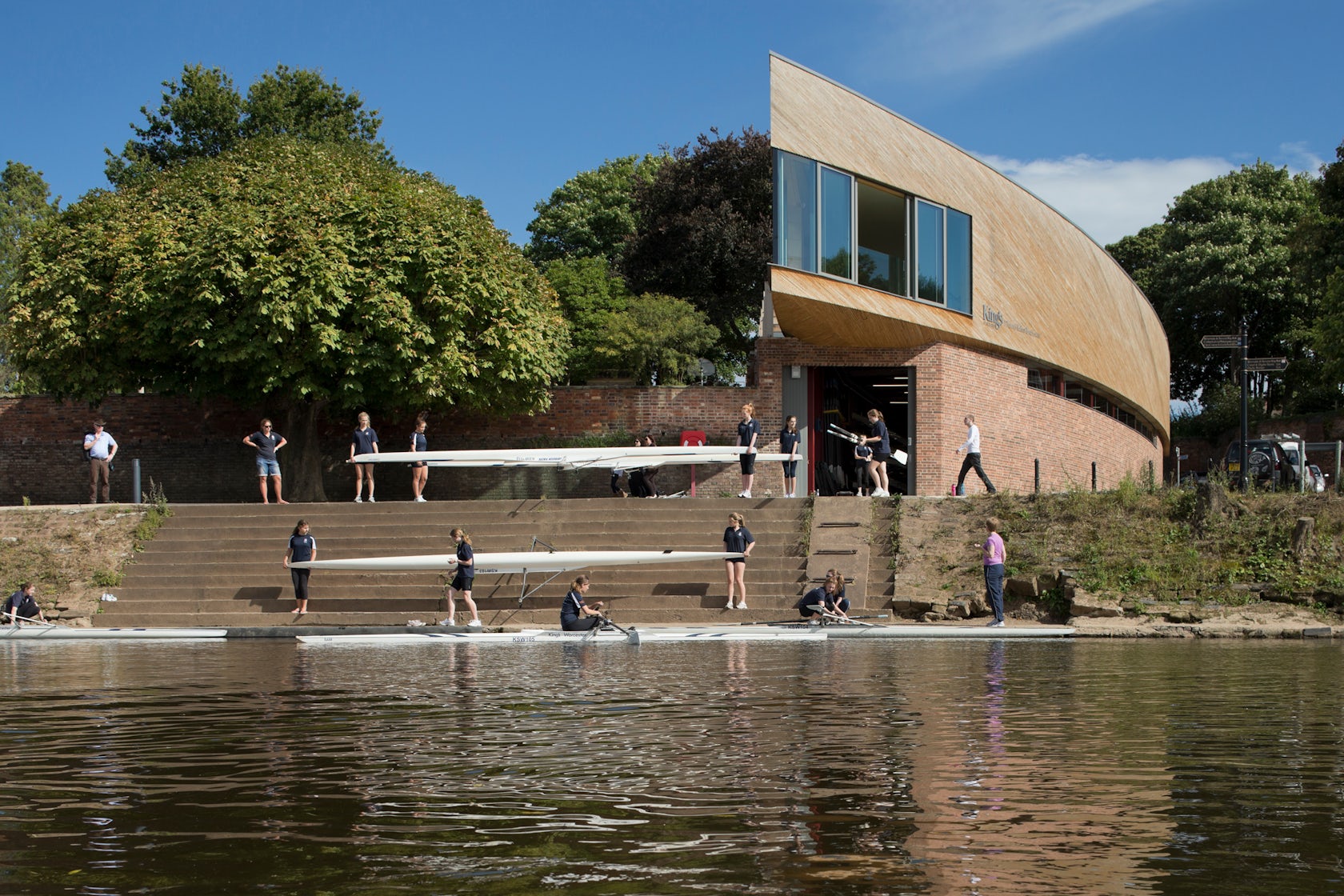The latest edition of “Architizer: The World’s Best Architecture” — a stunning, hardbound book celebrating the most inspiring contemporary architecture from around the globe — is now shipping! Secure your copy today.
Water is an important issue in architecture. In quantities large or small, we’re always trying to keep it out of our buildings. An entire cottage industry had grown around waterproofing strategies, materials and applications for both new and old projects.
In general, there are two ways to go about this problem: to work with it or against it. Counter to the philosophy that water should be accommodated and designed around, the projects in this collection represent emphatic moves against the infiltration of water, maintaining a clear imperative to keep it out at all costs.
Some of these projects rely on herculean feats of engineering, others take a more natural approach and some put a contemporary twist on the age-old method of simply raising the building above potential flood lines. In any case, they demonstrate a clear stance in their perception of the elements: that overcoming the forces of nature is a contest and, for better or for worse, it’s one they intend to win.

© José Luis Bezos

© José Luis Bezos
Lookout and Protection Building of the Genovés Park by José Luis Bezos, Cádiz, Spain
This long, linear building replaced a much older brick wall that has, for many years, protected a park and its delicate vegetation from seawater flooding. Problems with the old wall stemmed from its obstruction of the shore from park goers, so the new wall was made primarily of glass, and contains park facilities such as meeting spaces and public restrooms, as well as numerous physical connections between the park and the shore.

© Associated Architetcs LLP

© Associated Architetcs LLP
Michael Baker Boathouse by Associated Architects LLP, Worcester, United Kingdom
Flood-proofing an existing structure was a top priority for the construction of this upper-level addition. The footprint of the original, lower structure, made from brick, was expanded, and a second layer of brick was added to increase its resistance to high water. The addition above, made from much lighter materials, is set above the flood line.

© SCHOYERER ARCHITEKTEN_SYRA

© SCHOYERER ARCHITEKTEN_SYRA
Floodwater pumping station Mainz by SYRA_Schoyerer Architekten BDA, Mainz, Germany
The designers for this pumping station, which can handle the runoff from the entire city it serves in a 20-year flood event, were faced with the challenge of designing an industrial building in an area that has recently become residential. As a result, they elected to put the process of floodwater management on display for citizens, orienting the building according to the river’s flow, foregrounding the pumping equipment that runs through it, and coating the building itself with an attractive, smooth stone.

© Rupert Steiner

© Rupert Steiner
Copa Cagrana – Stromkilometer 12,5 by gerner°gerner plus, Vienna, Austria
Set directly on the waterfront, this riverside recreational structure claims flood-proof status, even with a sheer glass wall on the lower level. A disaster-ready intention is understood better when the whole material palette is taken into consideration: the rest of the lower level is framed in unfinished concrete, supporting a wooden shelter above, which also features full-height glass, taking advantage of an unobstructed view across the water.

© Timothy Hursley

© Timothy Hursley
Crystal Bridges Museum of American Art by Safdie Architects, Bentonville, Ark., United States
In an unlikely combo, this art museum also functions as a dam, creating a small pond between its two halves. Dramatic views over the water are emphasized, overshadowing the building’s role as infrastructure. A roof form supported by cables, as if it were a suspension bridge, adds further reference to the functional aspects of the relationship between people and water.

© Studio PEEK | ANCONA

© Studio PEEK | ANCONA
Flood-Proof House by Studio Peek Ancona
This prototype was developed for easy application in flood-prone areas around the world. Employing the familiar scheme of placing functional yet watertight spaces on the lower level and living spaces above, it aims to be a place of refuge during a flood, and to allow its residents to resume their normal activities immediately afterwards. In terms of construction, it is intended to be made from readily available parts that can be assembled with relative ease.


Metamorphous by Paul Sangha Landscape Architecture, Vancouver, Canada
A fresh take on a typical shoreline retaining wall was added to this waterfront property. Assembled with concrete and Corten steel, the unique, variegated shape of this wall naturally dissipates wave energy and replenishes the mass of the sandbar in front if it — the exact opposite effect of a typical retaining wall, which has been found to contribute to erosion and reduce shorelines.
The latest edition of “Architizer: The World’s Best Architecture” — a stunning, hardbound book celebrating the most inspiring contemporary architecture from around the globe — is now shipping! Secure your copy today.




